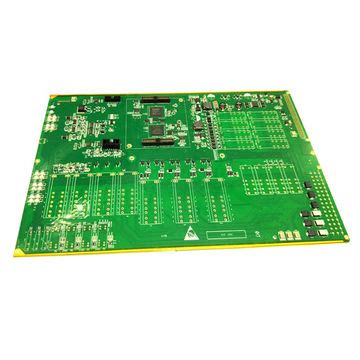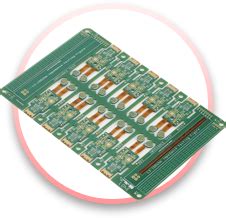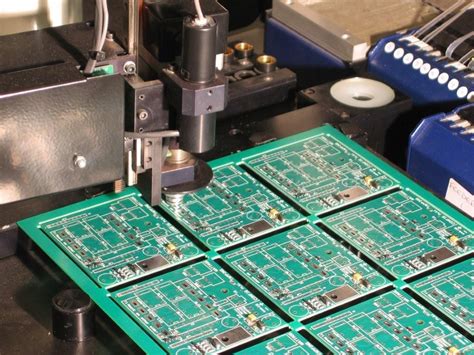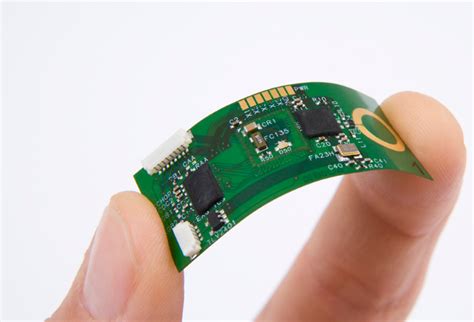High speed signal routing guidelines
Best Practices For High Speed Signal Routing
When dealing with high-speed signal routing, adhering to best practices is crucial to ensure signal integrity and minimize potential issues such as crosstalk, electromagnetic interference (EMI), and signal reflection.
One of the fundamental principles in high-speed signal routing is maintaining controlled impedance.
This involves designing the trace width and spacing in accordance with the dielectric properties of the PCB material to achieve a consistent impedance, typically 50 ohms for single-ended signals and 100 ohms for differential pairs. Controlled impedance helps in reducing signal reflections and maintaining signal integrity over long distances.
Another critical aspect is the use of differential pairs for high-speed signals.
Differential signaling involves two complementary signals that are routed together, which helps in canceling out noise and reducing EMI. When routing differential pairs, it is essential to maintain equal trace lengths to ensure that the signals arrive simultaneously at the receiver. This practice, known as length matching, minimizes skew and ensures proper signal timing. Additionally, the spacing between the differential pairs should be consistent to maintain the differential impedance.
Minimizing the number of vias in high-speed signal paths is also a best practice.
Vias introduce inductance and capacitance, which can degrade signal quality. When vias are unavoidable, it is advisable to use back-drilling to remove the unused portion of the via stub, thereby reducing reflections and improving signal integrity. Furthermore, routing high-speed signals on inner layers, sandwiched between ground planes, can provide better shielding and reduce EMI.
Grounding is another critical consideration in high-speed signal routing.
A solid ground plane is essential for providing a low-impedance return path for high-speed signals. This helps in reducing ground bounce and maintaining signal integrity. It is also important to avoid splitting the ground plane, as this can create discontinuities in the return path and lead to signal integrity issues. When crossing splits in the ground plane is unavoidable, it is advisable to use stitching capacitors to provide a low-impedance path for high-frequency signals.
Crosstalk is another concern in high-speed signal routing.
Crosstalk occurs when a signal in one trace induces noise in an adjacent trace. To minimize crosstalk, it is important to maintain adequate spacing between high-speed traces. Additionally, routing high-speed signals perpendicular to each other on adjacent layers can help in reducing crosstalk. Using ground traces or guard traces between high-speed signals can also provide additional isolation and reduce crosstalk.
Termination is another important aspect of high-speed signal routing.
Proper termination helps in matching the impedance of the transmission line to the load, thereby reducing reflections and improving signal integrity. There are various termination techniques, such as series termination, parallel termination, and AC termination, each with its own advantages and disadvantages. The choice of termination technique depends on the specific requirements of the design and the characteristics of the high-speed signals.
In conclusion, adhering to best practices in high-speed signal routing is essential for ensuring signal integrity and minimizing potential issues. Controlled impedance, differential signaling, minimizing vias, proper grounding, crosstalk reduction, and appropriate termination are all critical considerations in high-speed signal routing. By following these guidelines, designers can achieve reliable and high-performance PCB designs that meet the demands of modern high-speed applications.

Minimizing Crosstalk In High Speed PCB Design
Minimizing crosstalk in high-speed PCB design is a critical aspect that engineers must address to ensure signal integrity and optimal performance. Crosstalk, the unwanted coupling of signals between adjacent traces, can lead to data corruption, increased error rates, and overall system instability. To mitigate these issues, several guidelines and best practices should be followed during the design phase.
Firstly, maintaining adequate spacing between signal traces is paramount.
By increasing the distance between adjacent traces, the potential for electromagnetic interference (EMI) is significantly reduced. This spacing should be carefully calculated based on the operating frequency and the dielectric properties of the PCB material. Additionally, employing differential signaling can further minimize crosstalk. Differential pairs, which consist of two complementary signals, are less susceptible to external noise and can effectively cancel out any induced interference.
Another crucial factor is the use of proper grounding techniques.
A well-designed ground plane can act as a shield, absorbing and dissipating unwanted noise. Ensuring that the ground plane is continuous and free of gaps is essential. Moreover, placing ground vias strategically around high-speed signal traces can provide additional paths for return currents, thereby reducing the loop area and minimizing crosstalk.
The routing of signal traces also plays a significant role in crosstalk mitigation.
It is advisable to route high-speed signals on internal layers, sandwiched between ground or power planes. This configuration creates a controlled impedance environment and reduces the likelihood of signal coupling. When routing on outer layers is unavoidable, maintaining a consistent trace width and avoiding abrupt changes in direction can help preserve signal integrity.
Furthermore, the use of guard traces can be an effective strategy.
Guard traces are grounded lines placed between high-speed signal traces to act as a barrier, preventing crosstalk. These traces should be connected to the ground plane at regular intervals to ensure they function effectively. However, it is important to note that guard traces can increase the overall complexity of the PCB layout and should be used judiciously.
In addition to physical layout considerations, the choice of PCB materials can influence crosstalk levels.
High-frequency laminates with low dielectric constants and low loss tangents are preferable for high-speed designs. These materials exhibit lower signal attenuation and reduced crosstalk compared to standard FR-4 substrates. Selecting the appropriate material based on the specific requirements of the design can significantly enhance performance.
Signal termination is another aspect that cannot be overlooked.
Proper termination techniques, such as series or parallel termination, can help match the impedance of the transmission line to the load, thereby minimizing reflections and crosstalk. The choice of termination method depends on the specific characteristics of the signal and the overall design constraints.
Lastly, simulation and analysis tools are invaluable in the design process.
Utilizing electromagnetic simulation software can provide insights into potential crosstalk issues and allow for optimization before physical prototyping. By simulating different routing scenarios and material choices, engineers can identify and address potential problems early in the design cycle.
In conclusion, minimizing crosstalk in high-speed PCB design requires a comprehensive approach that encompasses trace spacing, grounding techniques, routing strategies, material selection, and signal termination. By adhering to these guidelines and leveraging advanced simulation tools, engineers can achieve robust and reliable high-speed designs that meet the stringent demands of modern electronic systems.

Effective Grounding Techniques For High Speed Signals
Effective grounding techniques are paramount in ensuring the integrity and performance of high-speed signal routing. As signal frequencies increase, the susceptibility to noise and electromagnetic interference (EMI) becomes more pronounced, necessitating meticulous attention to grounding practices.
One fundamental principle is the establishment of a low-impedance ground path.
This can be achieved by using a ground plane, which provides a continuous, unbroken conductive surface that minimizes inductive and resistive losses. The ground plane acts as a reference point for all signals, thereby reducing the potential for ground loops and ensuring signal integrity.
In addition to a solid ground plane, it is crucial to maintain a short return path for high-speed signals.
The return path should be as close as possible to the signal trace to minimize loop area, which in turn reduces inductive coupling and EMI. This can be accomplished by routing signal traces directly above or below the ground plane in a multilayer PCB design. By doing so, the return current flows directly beneath the signal trace, thereby minimizing the loop area and enhancing signal integrity.
Another effective grounding technique involves the use of decoupling capacitors.
These capacitors serve to filter out high-frequency noise and provide a stable voltage reference for high-speed circuits. Placing decoupling capacitors close to the power pins of integrated circuits (ICs) ensures that high-frequency noise is effectively shunted to ground, thereby preventing it from propagating through the system. It is advisable to use a range of capacitor values to cover a broad spectrum of frequencies, ensuring comprehensive noise suppression.
Furthermore, the concept of ground stitching vias is instrumental in maintaining signal integrity in high-speed designs.
Ground stitching vias are strategically placed vias that connect different ground planes or layers within a PCB. These vias provide a low-impedance path for return currents, thereby reducing the potential for ground loops and ensuring a consistent ground reference across the PCB. By placing ground stitching vias at regular intervals along the signal path, designers can effectively mitigate the effects of EMI and crosstalk.
It is also important to consider the separation of analog and digital grounds in mixed-signal designs.
Analog and digital circuits have different noise characteristics, and their grounds should be kept separate to prevent noise coupling. However, these grounds must eventually be connected at a single point, often referred to as a star ground, to ensure a common reference. This single-point connection minimizes the potential for ground loops and ensures that noise from digital circuits does not interfere with sensitive analog signals.
Moreover, the use of differential signaling can significantly enhance the robustness of high-speed signal routing.
Differential pairs consist of two complementary signals that are routed together, with one signal being the inverse of the other. This configuration allows for common-mode noise to be canceled out, as any noise that affects one signal will equally affect the other, resulting in a net zero effect. Differential signaling also benefits from a reduced loop area, as the return path is inherently close to the signal path, further enhancing signal integrity.
In conclusion, effective grounding techniques are essential for maintaining the integrity and performance of high-speed signal routing. By employing a solid ground plane, ensuring short return paths, utilizing decoupling capacitors, implementing ground stitching vias, separating analog and digital grounds, and leveraging differential signaling, designers can mitigate the challenges associated with high-speed signals. These practices collectively contribute to a robust and reliable high-speed design, ensuring optimal performance and signal integrity.

Managing Signal Integrity In High Speed Circuits
Managing signal integrity in high-speed circuits is a critical aspect of modern electronic design, as the performance and reliability of these circuits are highly dependent on the quality of signal transmission.
As data rates increase, the challenges associated with maintaining signal integrity become more pronounced, necessitating a comprehensive understanding of high-speed signal routing guidelines.
To begin with, it is essential to recognize that signal integrity issues such as crosstalk, reflection, and electromagnetic interference (EMI) can significantly degrade the performance of high-speed circuits. Therefore, careful consideration must be given to the layout and routing of signal traces on printed circuit boards (PCBs).
One of the fundamental principles in managing signal integrity is to minimize the length of high-speed signal traces.
Shorter traces reduce the likelihood of signal degradation due to attenuation and reflection. Additionally, maintaining consistent trace impedance is crucial. Impedance mismatches can cause signal reflections, leading to data corruption and timing errors. To achieve consistent impedance, designers should use controlled impedance traces, which involve specifying the trace width, spacing, and the dielectric properties of the PCB material.
Moreover, the use of differential signaling is highly recommended for high-speed circuits.
Differential pairs, which consist of two complementary signals, offer several advantages over single-ended signals. They are less susceptible to noise and EMI, as the noise tends to cancel out due to the differential nature of the signals. Furthermore, differential pairs should be routed together with a constant spacing to maintain the differential impedance and minimize skew between the signals.
In addition to differential signaling, proper termination techniques are essential for managing signal integrity.
Termination resistors can be used to match the impedance of the signal source and the load, thereby reducing reflections. There are various termination schemes, such as series termination, parallel termination, and Thevenin termination, each with its own advantages and trade-offs. The choice of termination technique depends on the specific requirements of the circuit and the characteristics of the signal.
Another critical aspect of high-speed signal routing is the management of crosstalk, which occurs when signals on adjacent traces interfere with each other.
To mitigate crosstalk, designers should maintain adequate spacing between high-speed signal traces and use ground planes to provide a return path for the signals. Ground planes not only help in reducing crosstalk but also play a vital role in controlling EMI. By providing a low-impedance return path, ground planes help in containing electromagnetic fields and reducing radiation.
Furthermore, the use of vias in high-speed signal routing should be minimized. Vias introduce inductance and capacitance, which can affect signal integrity.
When vias are necessary, their impact can be mitigated by using back-drilling techniques to remove the unused portion of the via, thereby reducing the associated parasitic effects.
Lastly, signal integrity analysis tools and simulation software are invaluable in the design process.
These tools allow designers to model and analyze the behavior of high-speed signals, identify potential issues, and optimize the layout before fabrication. By leveraging these tools, designers can ensure that their high-speed circuits meet the required performance and reliability standards.
In conclusion, managing signal integrity in high-speed circuits requires a thorough understanding of various factors, including trace length, impedance control, differential signaling, termination techniques, crosstalk management, and the use of vias. By adhering to high-speed signal routing guidelines and utilizing advanced analysis tools, designers can effectively address the challenges associated with high-speed circuits and ensure optimal performance and reliability.







